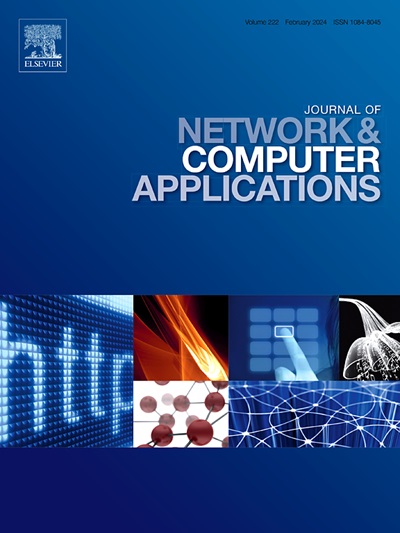Spectrum allocation method for millimeter-wave train-ground communication in high-speed rail based on multi-agent attention
IF 8
2区 计算机科学
Q1 COMPUTER SCIENCE, HARDWARE & ARCHITECTURE
引用次数: 0
Abstract
With the advancement of high-speed railways toward intelligent systems, a large number of IoT devices have been deployed in both onboard and trackside systems. The resulting surge in data transmission has intensified competition for spectrum resources, thereby significantly increasing the demand for train-ground communication systems with high capacity, low latency, and strong interference resilience.The millimeter wave (mmWave) frequency band provides a large bandwidth to support massive data transmission from IoT devices. Aiming at addressing the issues of low network capacity, high interference, and low spectral efficiency in mmWave train-ground communication systems under 5G-R for high-speed railways, we propose a multi-agent attention mechanism for mmWave spectrum allocation in train-ground communication. First, we analyzed the spectrum requirements of mmWave BS and onboard MRS, constructed a spectrum resource allocation model with the optimization objective of maximizing system network capacity, and transformed it into a Markov decision process (MDP) model. Next, considering the need for coordinated spectrum allocation and interference suppression between mmWave BS and MRS, we develop a resource optimization strategy using the Multi-Agent Deep Deterministic Policy Gradient (MADDPG) algorithm. Specifically, we combine multi head attention mechanism to improve the Critic network of MADDPG algorithm. This enhancement enables coordinated global–local strategy optimization through attention weight computation, thereby improving decision-making efficiency. Simulation results demonstrate that compared to existing methods, our algorithm achieves superior spectrum allocation performance, significantly increases network capacity while reducing interference levels, and meets the spectrum requirements of HSR communication systems.
基于多智能体关注的高速铁路毫米波车地通信频谱分配方法
随着高铁向智能化方向发展,大量物联网设备已部署在列车上和轨旁系统中。数据传输的激增加剧了对频谱资源的竞争,从而大大增加了对高容量、低延迟和强抗干扰能力的列车-地面通信系统的需求。毫米波(mmWave)频段提供大带宽,支持物联网设备的海量数据传输。针对5G-R高速铁路毫米波车地通信系统存在的网络容量小、干扰大、频谱效率低等问题,提出了一种车地通信毫米波频谱分配的多智能体关注机制。首先,分析了毫米波BS和机载MRS的频谱需求,构建了以系统网络容量最大化为优化目标的频谱资源分配模型,并将其转化为马尔可夫决策过程(MDP)模型。其次,考虑到毫米波BS和MRS之间协调频谱分配和干扰抑制的需要,我们开发了一种使用多智能体深度确定性策略梯度(madpg)算法的资源优化策略。具体来说,我们结合多头注意机制来改进madpg算法的Critic网络。这种增强通过计算注意力权重实现全局-局部协同策略优化,从而提高决策效率。仿真结果表明,与现有的频谱分配方法相比,该算法在显著提高网络容量的同时降低了干扰水平,能够满足高铁通信系统的频谱需求。
本文章由计算机程序翻译,如有差异,请以英文原文为准。
求助全文
约1分钟内获得全文
求助全文
来源期刊

Journal of Network and Computer Applications
工程技术-计算机:跨学科应用
CiteScore
21.50
自引率
3.40%
发文量
142
审稿时长
37 days
期刊介绍:
The Journal of Network and Computer Applications welcomes research contributions, surveys, and notes in all areas relating to computer networks and applications thereof. Sample topics include new design techniques, interesting or novel applications, components or standards; computer networks with tools such as WWW; emerging standards for internet protocols; Wireless networks; Mobile Computing; emerging computing models such as cloud computing, grid computing; applications of networked systems for remote collaboration and telemedicine, etc. The journal is abstracted and indexed in Scopus, Engineering Index, Web of Science, Science Citation Index Expanded and INSPEC.
 求助内容:
求助内容: 应助结果提醒方式:
应助结果提醒方式:


